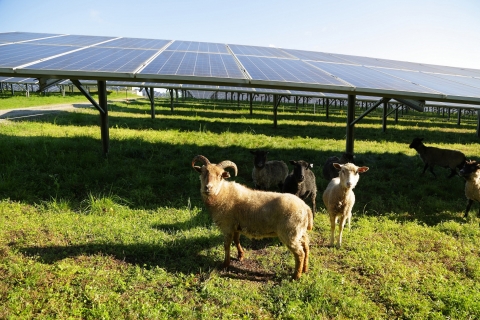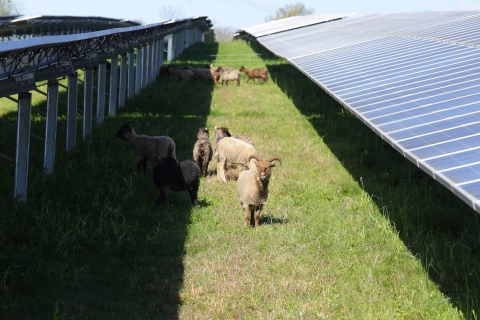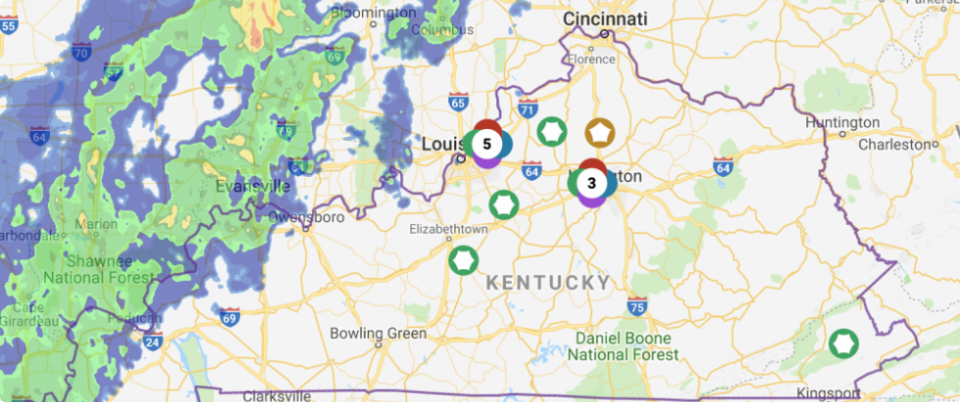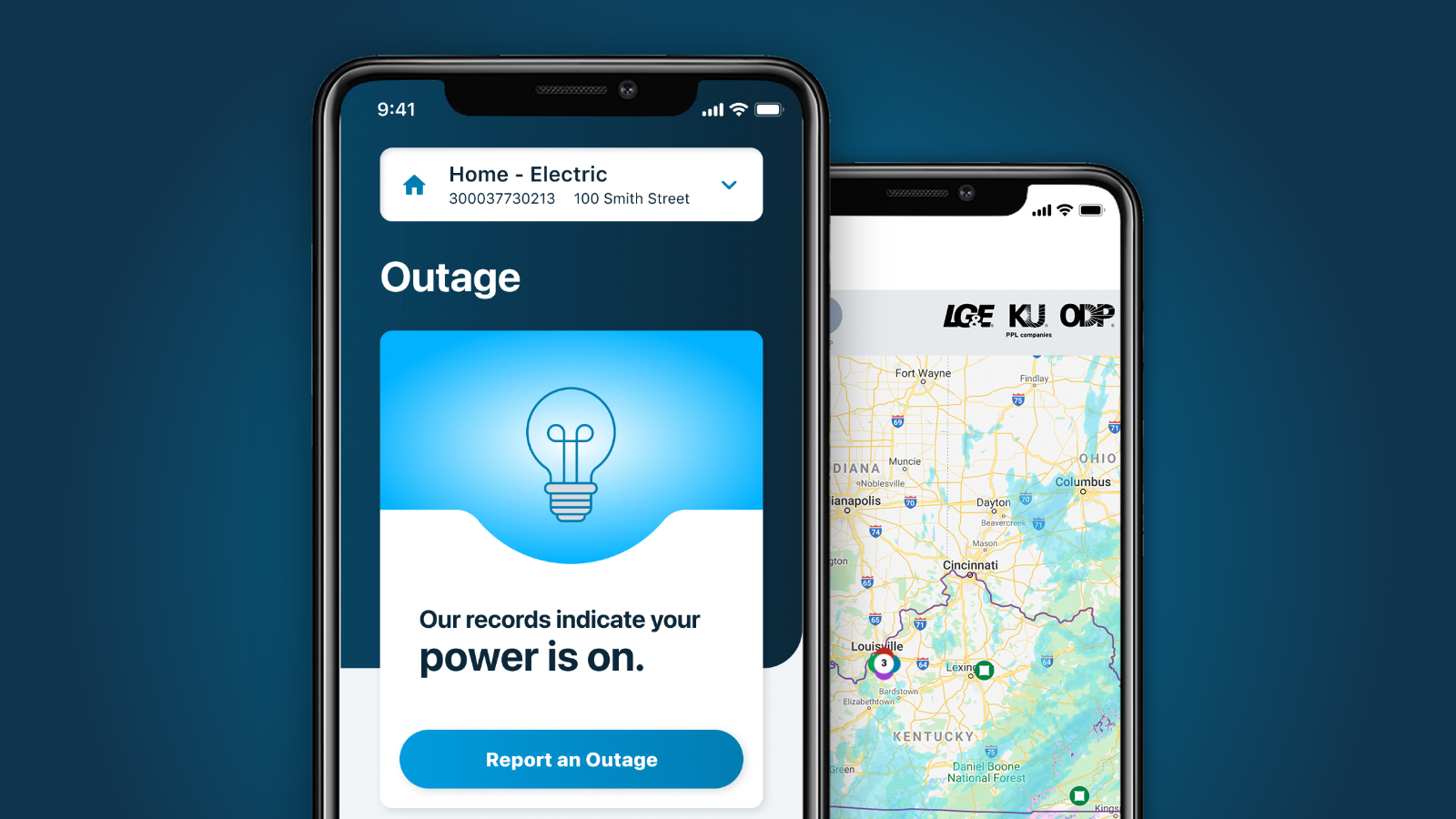Utilities partner to incorporate sheep and pollinator habitats at company facilities
(HARRODSBURG, Ky.) – Nestled in the rolling hills of Mercer County, Kentucky, E.W. Brown Generating Station is home to four different types of energy generating resources, including a nearly 100-year-old hydroelectric facility and the first, and largest, existing universal solar facility in the Commonwealth. Now, the station’s landscape is getting two new earth-friendly additions – a flock of 25 Shetland sheep and the incorporation of a pollinator habitat.
While sheep on a power plant property may not seem a conventional pairing, it is an ideal arrangement employees at E.W. Brown have envisioned for some time, that became a reality this spring.
“Mowing grass that grows under and around our solar arrays is extremely difficult to do, but grazing sheep help naturally to alleviate that problem,” said E.W. Brown General Manager Jeff Fraley. “They’re generally docile, small and, through their grazing, can keep vegetation at the site to a minimum, which will reduce maintenance costs over the long-term. We’re excited they’re finally here.”
Shaker Village of Pleasant Hill – a nearby destination and Kentucky’s largest National Historic Landmark, that also manages a working farm and nature preserve – is partnering with LG&E and KU to make the reality possible. As the sheep manage the solar field’s vegetation, farmers from Shaker Village will manage the flock. Shaker Village is overseeing the overall care, including any veterinary services, for the two rams and 23 ewes. They will also sheer the sheep and sell the wool to a local organic wool vendor. Proceeds from the sale of the wool will support Shaker Village’s mission and lower the costs of maintenance associated with the sheep.
“We’re happy to provide a green and sustainable way to help care for our neighbor’s land,” said Shaker Village Farm Manager Michael Moore. “Our farm gravitates toward heritage breeds, like Shetlands, that were raised by the Shakers of Pleasant Hill. This allows us to connect our farm story directly to the agricultural history of this region. Shetlands are genetically resilient by design and are recognized for their abilities in conservation grazing which allows us to take more of a hands-off approach than many modern and commercial breeds require for production.”
The flock will initially have 10 acres to graze. By this time next year, the number of sheep are expected to multiply three-fold, eventually growing large enough to maintain the entire 50-acre solar farm.
Pollinator Habitats
Because pollinators depend on flowers for pollen and nectar resources, solar sites that incorporate a variety of flowering plants across their landscape can benefit pollinators. LG&E and KU are establishing pollinator habitats, rich with native plants that create an environment that attracts and supports pollinators such as native bees, honey bees and monarch butterflies, which have experienced population declines over the last decade. Other benefits of pollinator habitats include beautifying the landscape, supporting grassland birds, reducing water runoff and soil erosion, reduced maintenance costs and educational opportunities. When completed, there will be over 100 acres of pollinator habitat and native grasslands at E.W. Brown. Creation of a pollinator habitat at LG&E and KU’s Solar Share facility in Shelby County is currently underway and other pollinator projects are planned for the company’s Cane Run and retired Tyrone station properties.
Visit lge-ku.com/environment to learn more of the ways we’re enhancing and protecting our environment.

Download

Download
###
Louisville Gas and Electric Company and Kentucky Utilities Company, part of the PPL Corporation (NYSE: PPL) family of companies, are regulated utilities that serve more than 1.3 million customers and have consistently ranked among the best companies for customer service in the United States. LG&E serves 329,000 natural gas and 418,000 electric customers in Louisville and 16 surrounding counties. KU serves 558,000 customers in 77 Kentucky counties and five counties in Virginia. More information is available at www.lge-ku.com and www.pplweb.com.



